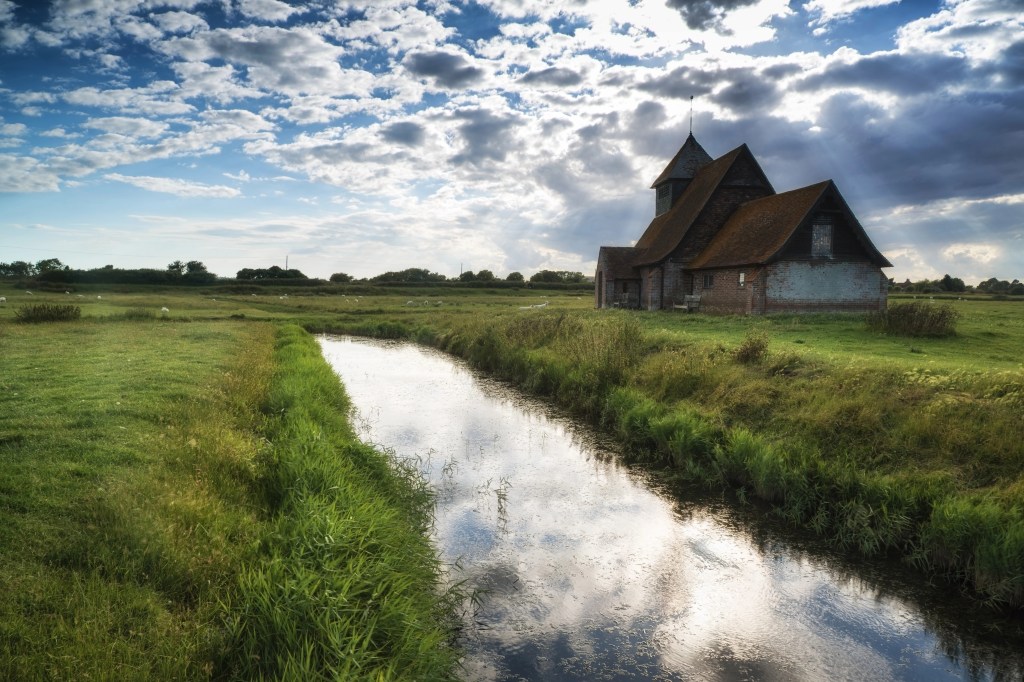“Welcome to The Fifth Continent,” Sally called after him.
Through Sally’s Eyes – John Eden
Alan squelched to a stop and swivelled. “The what?”
“The Fifth Continent. Haven’t you ever heard that before?”
Alan shook his head.
Sally studied him with an unblinking gaze. “It’s from The Ingoldsby Legends, published during the nineteenth century. If I remember the quote, it goes: ‘The world, according to the best geographers, is divided into Europe, Asia, Africa, America and Romney Marsh.’ Quite astute. This is a place like no other.”
The adoption of place as a character in its own right is a common device in literature. When weighing up locations for an introspective Alan Baker to escape and ponder his seeming dead-end life, I wanted a landscape echoing his predicament which transforms into something beautiful, even as Alan himself enters and emerges from a mental/emotional/psychological chrysalis. Some years ago I also spent many months down on Romney Marsh. First impressions often assess it a damp, drab, depressing place devoid of life or interesting features. Yet this environment, rescued from the sea, is a biodiversity gem. It also seeps into your soul after a while, like its iconic mist seeps into your bones. Romney Marsh is a vibrant community of absolute characters. The ones in the book are fictitious, but I hope they offer a flavour of what a special and oft-overlooked part of the world it is.
I popped back this week during a heavy downpour, but managed to snap a few pictures of actual places you’ll find in the story. Enjoy.
A broader dyke on the north side of the lane split beside a low stone bridge bordered by red brick parapets. Its main flow crossed beneath the thoroughfare, while a narrower drainage channel continued northward in a meandering sweep. To his right, Alan noticed The Star Inn with its associated cottage Ken had referred to in his mention of Noel Coward. A painted sign on a white pole announced the pub beside a faded Sir Giles Gilbert Scott, classic K1 red telephone box. Its aged paintwork lost all impact in contrast to a near crimson postbox atop the riverbank, accompanied by a chalk board declaring the hostelry a purveyor of real ales. A spired Kentish ragstone church dating to the early twelfth century stood beyond the bridge, where the road swept around in front. Alan remembered the house of worship from his pilgrimage to E Nesbit’s grave.
Through Sally’s Eyes – John Eden
“St Mary the Virgin. Which means this turning off to the left must be Pickneybush Lane.”

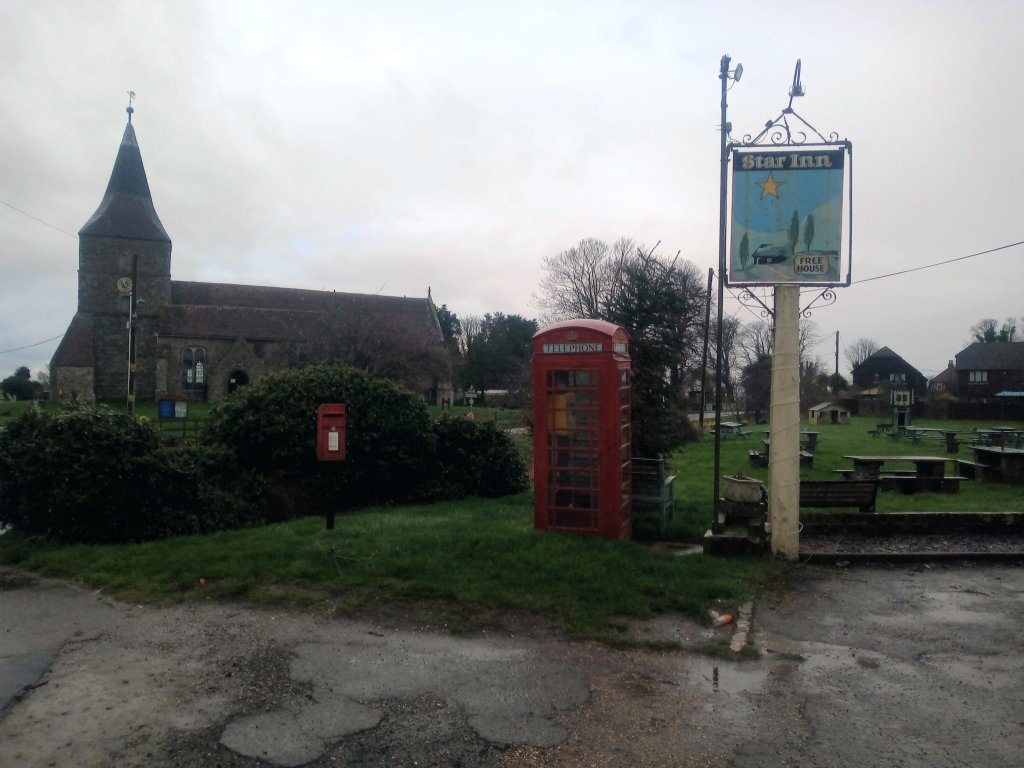
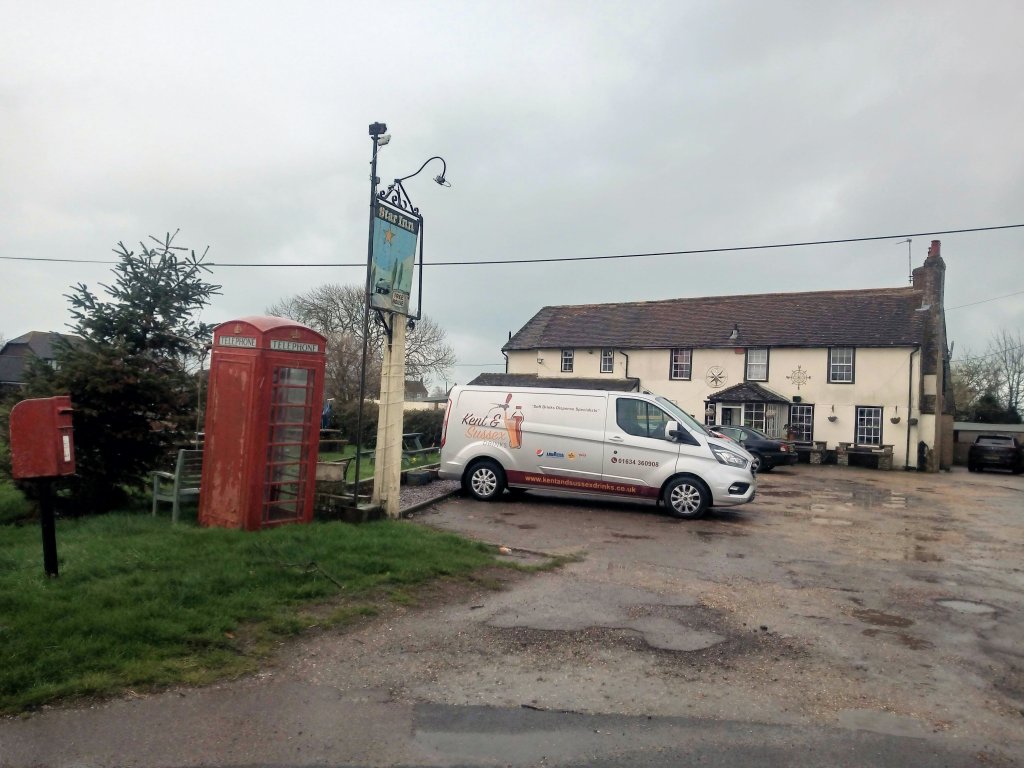
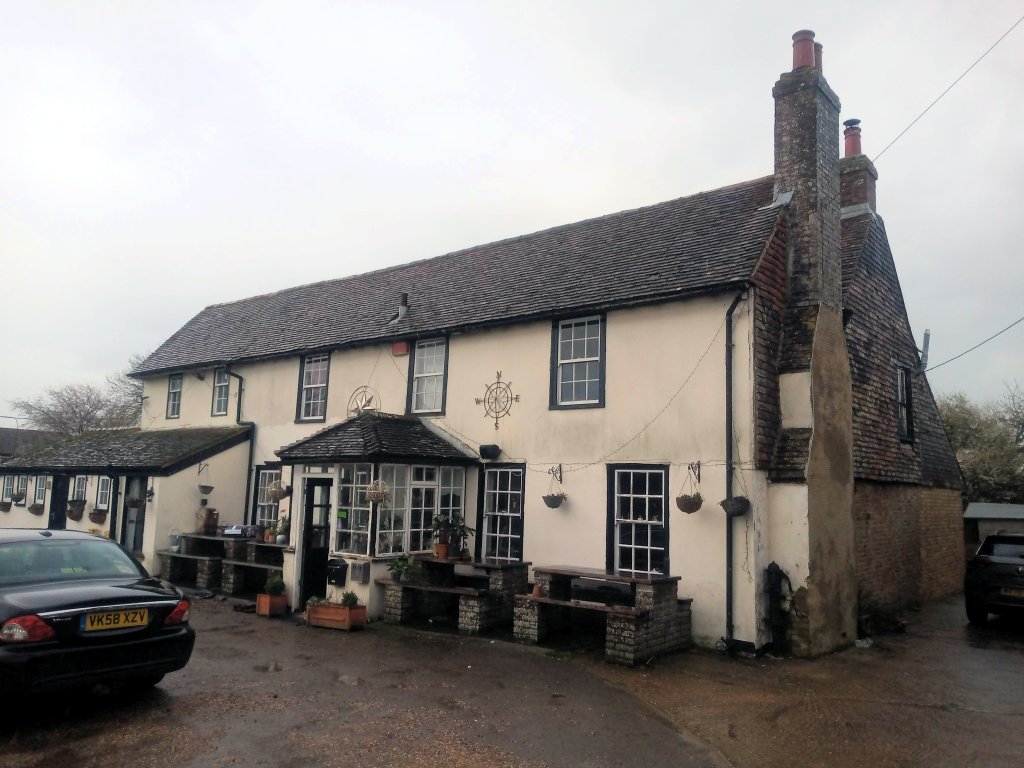
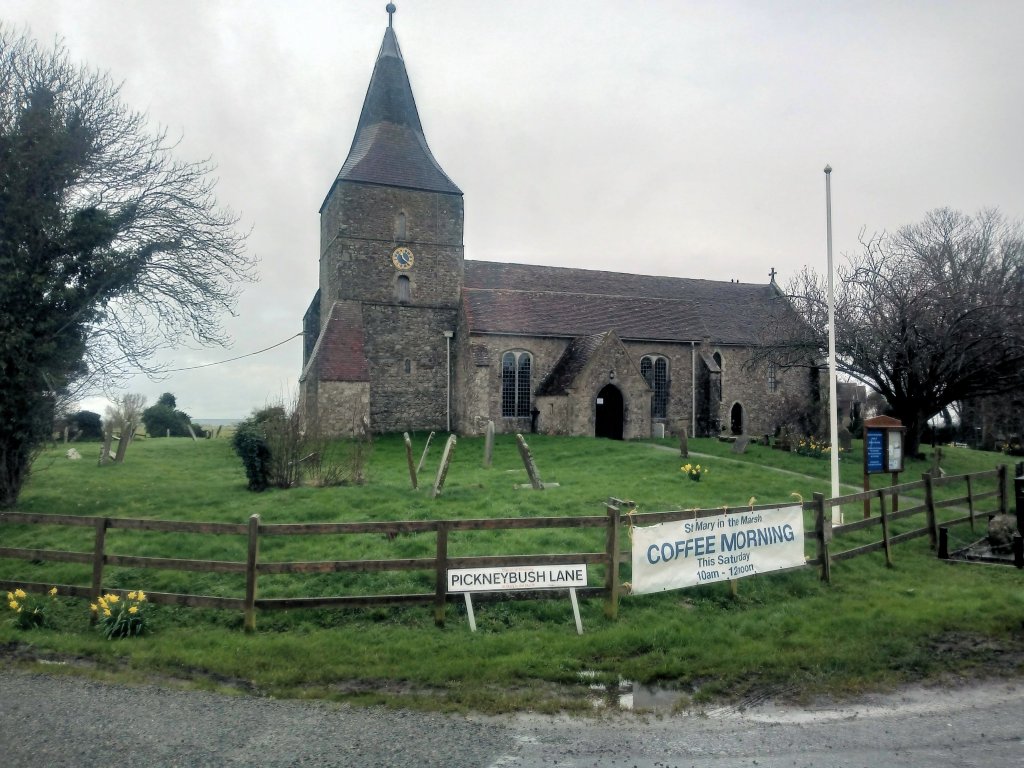
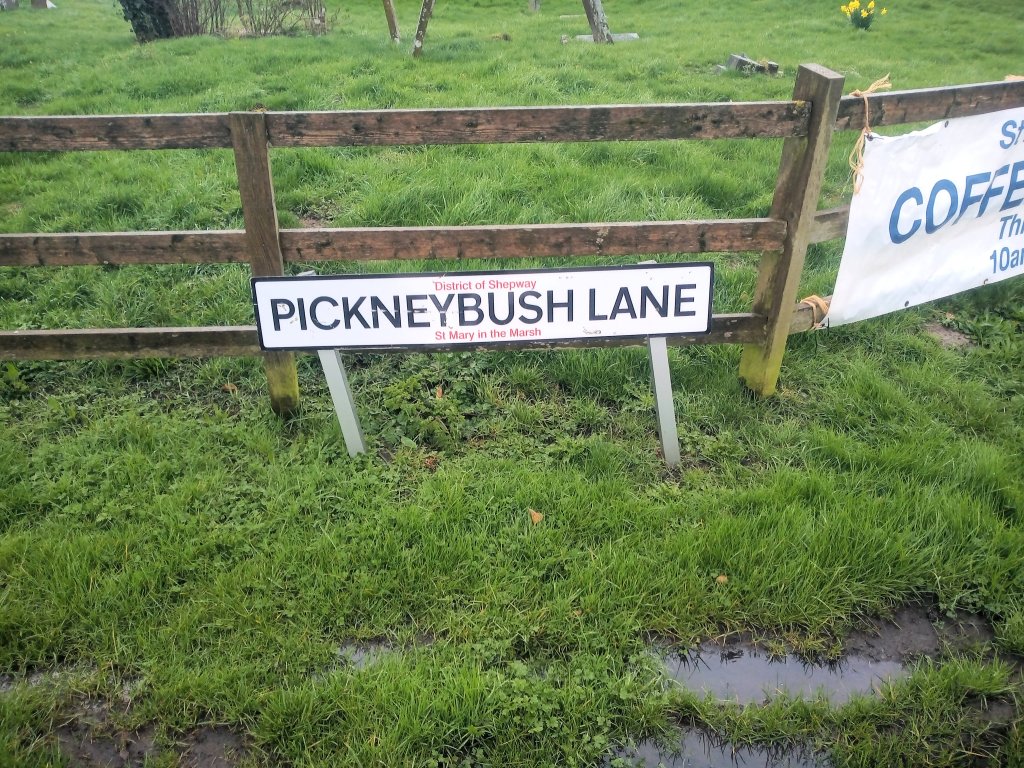

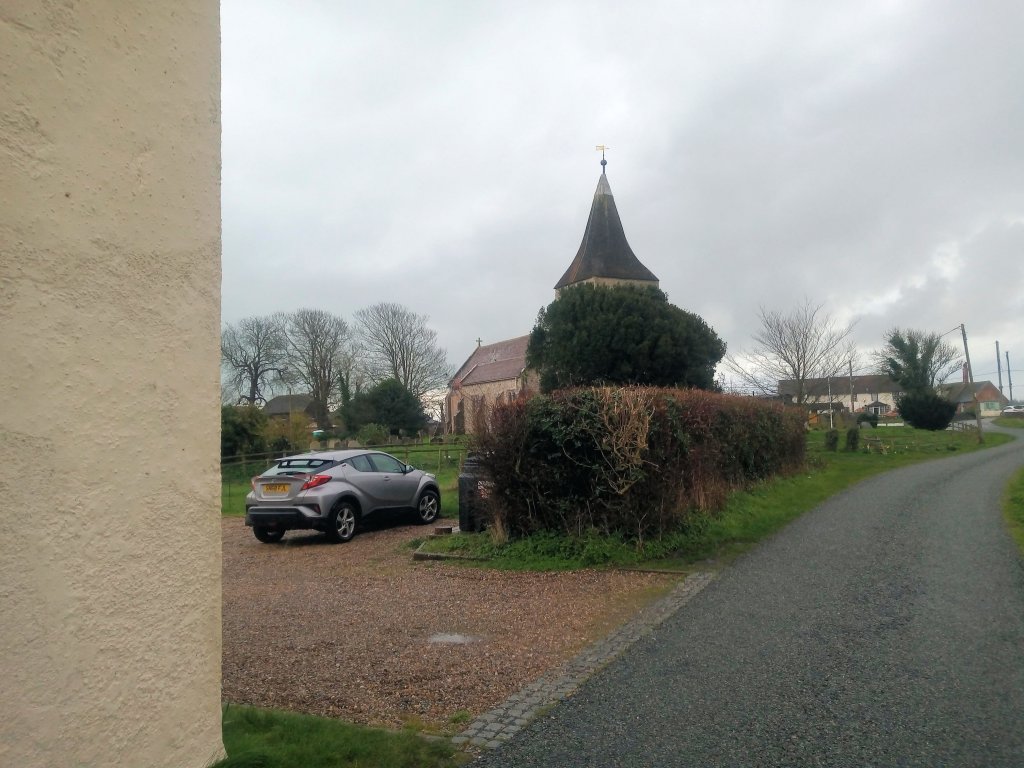


The white rendered semi-detached cottages of Everdene and its attached neighbour, Church View, couldn’t be mistaken. Kent Peg Tiles and upper storey blackened weatherboard cladding provided a visual variation in texture and colour to this dual-occupancy building, a stone’s throw from the churchyard. Alan pulled in to a gravel parking area fronting the joined homes, whose back-to-back porches (also roofed with Kent Peg Tiles) gave the appearance of a nose to the structure, making it seem friendly. Observant as ever, Alan noticed each property benefited from individual oil tanks for central heating. The half abutting the lane belonged to Ken Grant. A chimney sprouted from this portion alone, causing Alan to wonder if Church View’s had been demolished, or if the home was once a single dwelling farmhouse.
Through Sally’s Eyes – John Eden

